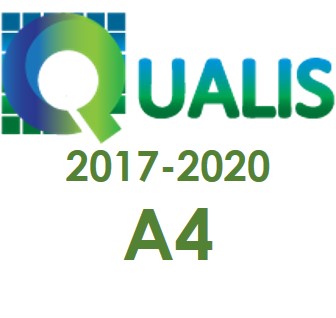Prosódia e funções discursivas das interrogativas na Fala Dirigida à Criança (Prosody and discursive functions of questions in Infant-Directed Speech)
Palavras-chave:
Fala dirigida à criança; Perguntas; Prosódia; Funções discursivas; Aquisição da linguagem.Resumo
Investigamos as interrogativas produzidas com fala dirigida à criança por adultos interagindo com bebês brasileiros. A FDC apresenta modificações sintáticas, lexicais, prosódicas e alta taxa de interrogativas. Coletamos dados de quatro bebês (4 a 12 meses) e seus cuidadores e caracterizamos as perguntas em seus aspectos prosódicos e funções discursivas. Verificamos que a maioria das perguntas foi marcada por um ou mais traços prosódicos. Inicialmente as perguntas buscam engajar o bebê na cena, são retóricas e bastante realçadas. Aos seis meses, cresce a presença de semirretóricas, que visam verificar a compreensão. Aos dez meses, perguntas plenas, buscando informação nova e resposta clara, tornam-se mais presentes. Os resultados sugerem que as funções das interrogativas alinham-se ao desenvolvimento da capacidade do bebê de dialogar com o adulto, tendo a prosódia importante papel ao destacar distinções entre enunciados e intenções do adulto, potencializando o desenvolvimento cognitivo, linguístico, afetivo e social do bebê.
Downloads
Referências
BARBOSA, P. G. Características da fala materna e suas implicações para a aquisição inicial do vocabulário. 2013. 72f. Dissertação de Mestrado em Psicologia, Universidade Federal de Minas Gerais, Belo Horizonte, 2013.
BOERSMA, P; WEENINK, D. Praat: doing phonetics by computer [Computer program]. Versão 6.1.08. Disponível em http://www.praat.org. Download realizado em setembro de 2019.
BRAUN, B., DEHÉ, N.; NEITSCH, J.; WOCHNER, D.; ZAHNER, K. The prosody of rhetorical and information-seeking questions in German. Language and Speech, v. 62, n. 4, p. 779-807, 2018.
BRENTARI, D.; FALK, J.; WOLFORD, G. The acquisition of prosody in American Sign Language. Language, v. 91, n. 3, p. e144-e168, 2015. DOI: 10.1353/lan.2015.0042.
CAVALCANTE, M. C. B. Da voz à língua: a prosódia materna e o deslocamento do sujeito na fala dirigida ao bebê. 1999. 239f. Tese de Doutorado em Linguística, Universidade Estadual de Campinas, Campinas, 1999.
CAVALCANTE, M. C. B.; BARROS, A. T. M. Manhês: Qualidade vocal e deslocamentos na dialogia mãe-bebê. Veredas Revista de Estudos Linguísticos, v. especial, p. 25-39, 2012.
CHIANG, C.; GEFFEN, S; MINTZ, T. Distinguishing questions and statements using sentence-initial prosodic cues. In: BERTOLINI, A. B.; KAPLAN, M. J. (Eds.) Proceedings of the 42nd Annual Boston University Conference on Language Development. Somerville, MA: Cascadilla Press, 2018. p. 153-158.
COOPER, R.; ASLIN, R. Preference for infant-directed speech in the first month after birth. Child Development, v. 61, n. 5, p. 1584-1595, 1990.
DADALTO, E.; GOLDFELD, M. Características do maternalês em duas crianças de idades distintas. Distúrbios da Comunicação, v. 18, n. 2, p. 201-208, 2006.
DE PABLO, I; MURILLO, E.; ROMERO, A. The effect of infant-directed speech on early multimodal communicative production in Spanish and Basque. Journal of Child Language, v. 47, p. 457-471, 2020.
DEHÉ, N.; BRAUN, B. The prosody of rhetorical questions in English. English Language and Linguistics, p. 1-29, 2019. DOI: https://doi.org/10.1017/S1360674319000157.
FERNALD, A. Human maternal vocalizations to infants as biologically relevant signals: An evolutionary perspective. In BARKOW, J.; COSMIDES, L.; TOOBY, J. (Eds.) The adapted mind. Evolutionary psychology and the generation of culture. Nova York: Oxford Univ. Press, 1992. p. 391-428.
FERNALD, A.; TAESCHER, T.; DUNN, J.; PAPOUSEK, M.; BOYSSON-BARDIES, B. D.; FUKUI, I. A cross-language study of prosodic modifications in mothers’ and fathers’ speech to preverbal infants. Journal of Child Language, v. 16, p. 477-501, 1989.
FROTA, S.; BUTLER, J.; VIGÁRIO, M. Infant’s perception of intonation: Is it a statement or a question? Infancy, v. 19, n. 2, p. 194-213, 2014. DOI: https://doi.org/10.1111/infa.12037.
FUKS, O. Multimodal motherese in Israeli sign language. TISLR13, 2019. DOI: 10.13140/RG.2.2.30585.42081.
GARNICA, O. K. Some prosodic and paralinguistics features of speech to young children. In: SNOW, C. E; FERGUSON, C. A. (Eds). Talking to children: Language input and acquisition. Cambridge: Cambridge University Press, 1977. p. 63-88.
GEFFEN, S.; MINTZ, T. Prosodic differences between declaratives and interrogatives in infant-directed speech. Journal of Child Language, v. 44, p. 968-994, 2017.
GOMES DA SILVA, C.; CARNAVAL, M.; MORAES, J. A. Atos de fala diretivos em português e em espanhol: uma análise acústica comparativa. Entrepalavras, v. 10, n. 1, p. 326-345, 2020. DOI: http://dx.doi.org/10.22168/2237-6321-11751.
KALASHNIKOVA, M.; KEMBER, H. Prosodic cues in infant-directed speech facilitate young children’s conversational turn predictions. Journal of Experimental Child Psychology, v. 199, p. 1-16, 2020. DOI: https://doi.org/10.1016/j.jecp.2020.104916.
MORAES, J. A. A entoação modal brasileira: fonética e fonologia. Cadernos de Estudos Linguísticos, n. 25, p. 101-111, 1993. DOI: https://doi.org/10.20396/cel.v25i0.8636887.
MORAES, J. A. The pitch accents in Brazilian Portuguese: analysis by synthesis. In: BARBOSA, P.; MADUREIRA, S.; REIS, C. (Eds.) Proceedings of Speech Prosody 2008. Campinas: LBASS, 2008. p. 389-397.
MORAES, J. A.; COLAMARCO, M. Você está pedindo ou perguntando: uma análise entonacional de pedidos e perguntas no português do Brasil. Revista de Estudos Linguísticos, v. 15, n. 2, p. 113-126, 2007.
NAME, C.; SOSA, J.M. Cadê o amor da mamãe? As interrogativas na fala dirigida à criança adquirindo o PB. Veredas Revista de Estudos Linguísticos, v. 24, n. 1, p. 72-93, 2020.
NARAYAN, C.; McDERMOTT, L. Speech rate and pitch characteristics of infant-directed speech: Longitudinal and cross-linguistic observations. The Journal of the Acoustical Society of America, v. 139, p. 1272-1281, 2016. DOI: https://doi.org/10.1121/1.4944634.
NASATAKA, N. Motherese in a signed language. Infant Behavior and Development, v. 15, n. 4, 453-460, 1992.
NEWPORT, E. Motherese: the speech of mothers to young children. In Castellan, N. J.; Pisoni, D. B.; Potts, G. R. (Eds). Cognitive theory. Vol. 2. Hillsdale: Lawrence Erlbaum Ass., 1977. p. 177-217.
NIELSEN, N.M. Expanding Searle’s analysis of interrogative speech acts: a systematic classification based on preparatory conditions. Scandinavian Studies in Language, v. 11, n. 1, p. 7-19, 2020.
NUNES, V. A prosódia de sentenças interrogativas totais nos falares catarinenses e sergipanos. 2015. 563f. Tese de Doutorado em Linguística, Universidade Federal de Santa Catarina, Florianópolis, 2015.
PESSÔA, L.; MOURA, M. L. Fala maternal dirigida à criança em cenários comunicativos específicos: um estudo longitudinal. Psicologia: Teoria e Pesquisa, v.2, n.4, p. 439-447, 2011.
RÄSÄNEN, O.; KAKOUROS, S.; SODERSTROM, M. Is infant-directed speech interesting because it is surprising? Linking properties of IDS to statistical learning and attention at the prosodic level. Cognition, v. 178, p. 193-206, 2018. DOI: 10.1016/j.cognition.2018.05.015
SAINT-GEORGES, C.; CHETOUANI, M.; CASSEL, R.; APICELLA, F.; MAHDHAOUI, A.; MURATORI, F.; LAZNIK, M.-C.; COHEN, D. Motherese in interaction: At the cross-road of emotion and cognition? (A systematic review). PLoS One, v. 8, n. 10, p. e78103, 2013. DOI: https://doi.org/10.1371/journal.pone.0078103.
SEARLE, J. R. Speech Acts: An Essay in the Philosophy of Language. Oxford: Cambridge University Press, 1969. 226p.
SILVA, I. S.; NAME, C. A sensibilidade de bebês brasileiros a pistas prosódicas de fronteiras de sintagma entoacional na Fala Dirigida à Criança. Letrônica, v. 7, n. 1, p. 4-25, 2014. DOI: https://doi.org/10.15448/1984-4301.2014.1.16855.
SILVA, C. R.; SANTOS, J. C. L. Perguntas retóricas: entre a gramaticalização e a discursivização. Veredas Revista de Estudos Linguísticos, v. 19, n. 2, p. 248-268, 2015.
SNOW, E. C. Mothers’ speech research: from input to interaction. In: SNOW, C. E; FERGUSON, C. A. (Eds). Talking to children: Language input and acquisition. Cambridge: Cambridge University Press, 1977. p. 31-49.
SNOW, E. C. Issues in the study of input: Finetuning, universality, individual and developmental differences, and necessary causes. In: FLETCHER, P.; MACWHINNEY, B. (Eds.) The Handbook of Child Language. Cambridge, MA: Blackwell, 1995. p. 180-193.
SODERSTROM, M.; BLOSSOM, M.; FOYGEL, R.; MORGAN, J. Acoustical cues and grammatical units in speech to to preverbal infants. Journal of Child Language, v. 35, n. 4, 869-902, 2008.
SOLEY, G.; SEBASTIAN-GALLES, N. Infants’ expectations about the recipients of infant-directed speech. Cognition, v. 198, 104214, p. 1-9, 2020. DOI: https://doi.org/10.1016/j.cognition.2020.104214.
SPLENDORE, K.; CONSTANTINI, A. C.; DA SILVA, K. C. Investigação da prosódia e da linguagem na interação mãe-bebê. Working Papers em Linguística, v. 20, n. 1, p. 172-188, 2019. DOI: https://doi.org/10.5007/1984-8420.2019v20n1p172.
SUNDARA, M.; MOLNAR, M.; FROTA, S. The perception of boundary tones in infancy. Proceedings of the 18thInternational Congress of Phonetic Sciences. 2015.
THORSON, J.; BORRAS-COMES, J.; CRESPO-SENDRA, V.; VANRELL, M.; PRIETO, P. The acquisition of melodic form and meaning in yes-no interrogatives by Catalan and Spanish children. Probus, v. 27, n. 1, p. 73-99, 2014. DOI: https://doi.org/10.1515/probus-2013-0019.
WEPPELMAN, T. L.; BOSTOW, A.; SCHIFFER, R.; ELBERT-PEREZ, E.; NEWMAN, R. S. Children’s use of the prosodic characteristics of infant-directed speech. Language and Communication, v. 23, n.1, p. 63-80, 2003.
Downloads
Publicado
Edição
Seção
Licença

Este trabalho está licenciado sob uma licença Creative Commons Attribution 4.0 International License.
Autores que publicam em Estudos da Língua(gem) concordam com os seguintes termos:
Estudos da Língua(gem) mantém os direitos autorais das contribuições publicadas e disponibiliza seu conteúdo gratuitamente por meio do portal. Autores têm permissão e são estimulados a publicar e distribuir seu trabalho online em repositórios institucionais ou na sua página pessoal, com reconhecimento de autoria e créditos de publicação inicial nesta revista, indicando endereço online.








